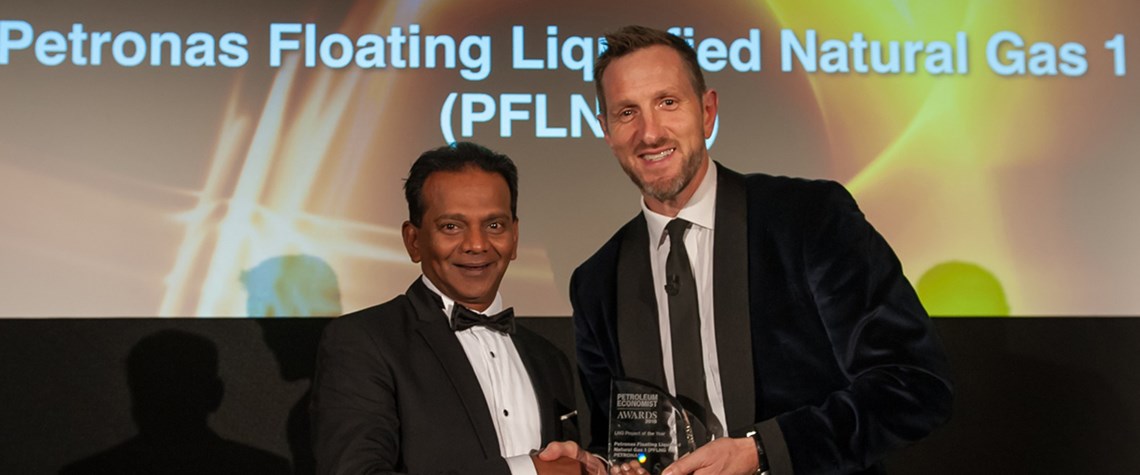Petronas achieved a global first for the LNG sector in 2016 with the start-up of its cutting-edge floating LNG facility. The project marked a turning point in the goal to unlock small, stranded and often remote gas assets previously thought uneconomical. It also positioned the company as a leading figure in the move towards cleaner, more sustainably sourced fuels.
FLNG1 is an imposing feat of technical and innovative engineering. The facility manages to house an LNG processing train, normally 2.5km2 by area, on a floating vessel 360m long by 40m wide. Combined, the project has capacity to produce 1.2mn tonnes a year of LNG and a storage capacity of 170,000 m3. It also sets new standards for efficiency and safety. The facility is the first to offer side-by-side offloading of LNG in an offshore location, employing a marine loading arm transfer system and a dual row membrane type cargo containment system (CSS) to maintain balance. Numerous tests and studies were undertaken to ensure maximum performance regardless of operating conditions.
The project is an industry gamechanger and sets the stage for future FLNG projects. These vessels allow oil and gas companies the flexibility to develop, store and transport LNG close to offshore fields, and then redeploy the vessels to other fields when necessary. Previously these marginal fields would not have been developed due to the high cost of extracting the gas reserves and difficulty of connecting to pipeline infrastructure.
Petronas is now moving ahead with its next FLNG venture, PFLNG2, which will begin first production in 2020.








Comments